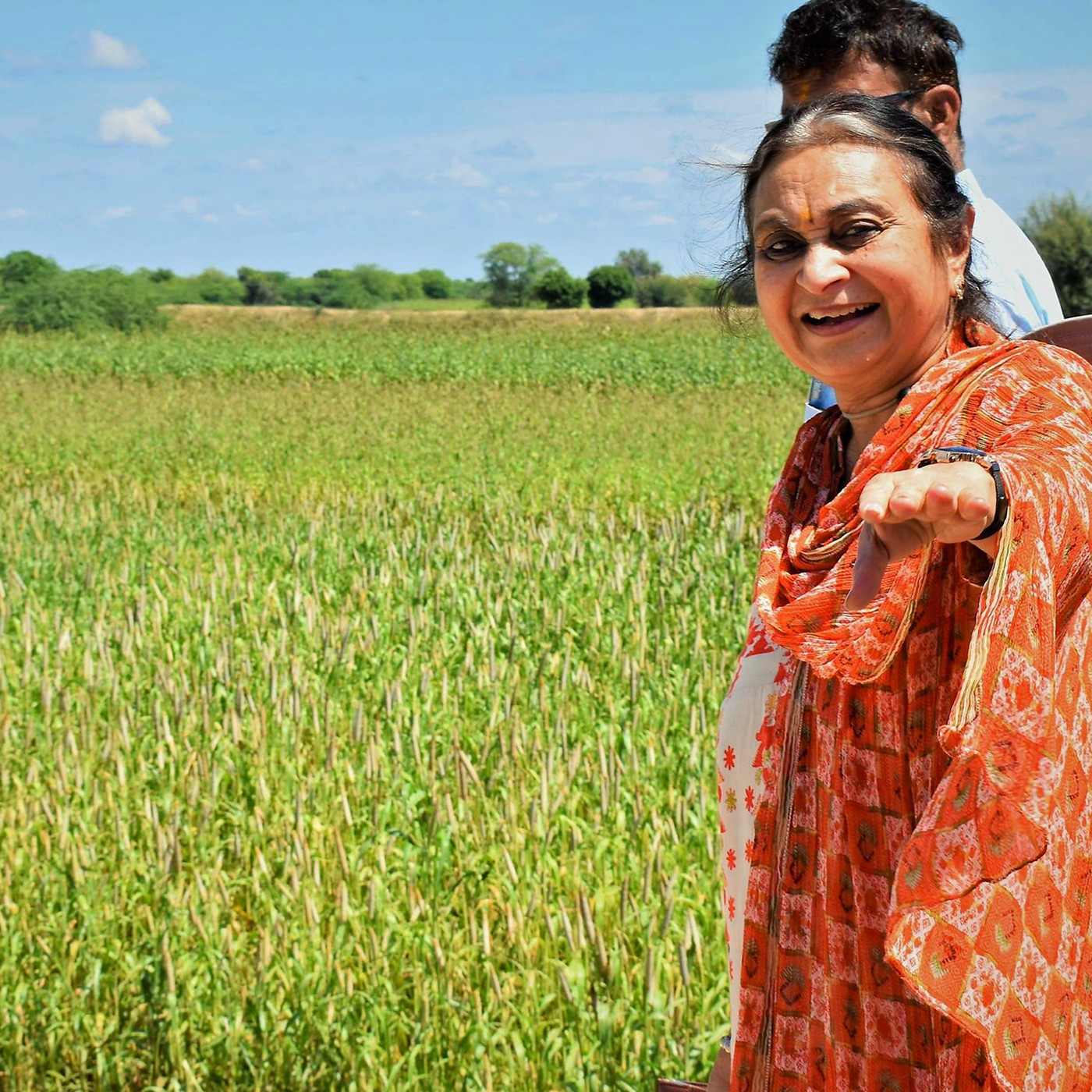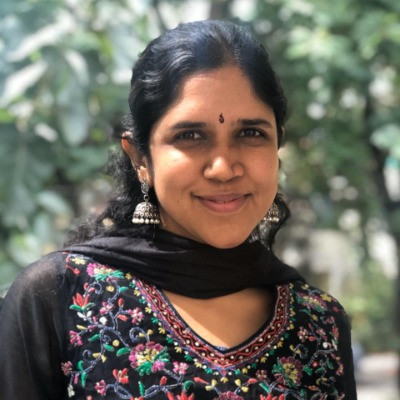This is the fourth story in a series of articles launched by Astral Pipes and Nature inFocus to create awareness about the ongoing water crisis and to encourage necessary action to address it.
In the year 1998, the state of Rajasthan was facing yet another drought, resulting in a disastrous famine which affected more than 30,000 villages and 70% of its rural population. Around that time, Mumbai-based Amla Ruia, who generally stayed away from the television, sat down one evening for some small-screen indulgence, and was shocked to see images of Rajasthan’s famine-stricken villages. We all encounter life-altering moments when we least expect them. In the case of Ruia, this moment changed the course of her life, catapulting her on a journey towards water conservation.
Ruia founded the Aakar Charitable Trust in 2003 to promote water conservation in rural India. The Trust not only aims to solve water issues, but also provides long-term solutions that impact the overall development of these rural areas. During her conservation journey, Ruia has transformed the lives of over 6 lakh people in 500+ villages across various states such as Rajasthan, Uttar Pradesh, Bihar, Odisha, Madhya Pradesh, Maharashtra and Haryana. Her years of work in water conservation has earned her the moniker Pani Mata or the Water Mother of India. She is also the recipient of the Lakshmipat Singhania IIM Lucknow National Leadership Award and the India Eye International Human Rights Observer Achievement Award.
In this interview, 73-year-old Ruia talks about how water conservation paves the way for greater reform and how the Aakar Charitable Trust (ACT) is transforming rural India, one village at a time.
Not many can say that television changed their life the way you can. But do you remember that moment when you decided that water conservation would be your life’s goal, moving forward?
Even after two decades of work in water conservation, I am still surprised by my foray into this field. Seeing those images coming out of famine-stricken Rajasthan stirred something in me. To help with the drought at the time, my father-in-law had started sending grains, food and tankers of water to the affected regions. But in my mind, this was not the true solution. I kept thinking, this would address their needs for two days, but what about the years to come when Rajasthan would be subjected to a similar crisis, again? So, I went all out in search of THE solution. I sent a water expert to Rajasthan, who suggested a few ideas. I visited the villages myself and witnessed firsthand the work some of the NGOs were doing, and I saw that they were alleviating the misery of the people by building check dams. Before I knew it, the course was set for me. Water conservation became my calling.
Why are check dams an ideal solution to address droughts, and how did you execute your first project in Rajasthan?
The check dam technique that we have adopted has been prevalent in India since the Harappan civilisation. The masonry work required for check dams is relatively small, but these constructions are capable of changing the very ecology of a place. On either side of the constructed walls, huge embankments extend which hold several crores of litres of water. The purpose of these check dams is to hold water for a short time and then let it seep into the ground. The capillary action in the soil allows the water to reach farmers’ wells and replenish groundwater levels.
Check dams are made in slightly hilly terrains, where the elevated regions serve as catchment areas. The rainwater falling on these hills flow to the lower regions and gets collected in these dams. After extensive research, we identified Mandawar in Alwar district as the right location to build our first check dam. The villages here were mainly inhabited by women and older people, the younger men having moved to cities in search of jobs. The women were highly enthused by the idea and they insisted that we build a check dam. I still remember the first day of construction, there were more than 250 people who participated in digging the foundation, under our supervision. Now we use appropriate machinery, but this was our first construction, called Halera ka check dam (check dam of Halera), where the residents did the digging by themselves. I was so touched to see their participation; it went to show how much they needed water in their lives. After it was constructed, the rains came very soon and the dam was filled to the brim, with the water overflowing.
Could you tell us a little more about your work with the Trust?
ACT works in areas where government schemes have not reached, and where there is no other intervention. Some of the villages we visit don’t even have proper roads; jeeps can only take us so far and the rest we cover by foot. The way we go about our process is that our karyakarthas (staff) visit a village and interact with the people there to understand their needs. The villagers show us the best place to build the check dam structure and our consultants and project managers then assess the area. They look at factors such as the available catchment area, how much land is there for the spread of water and what is the projected cost. Based on these assessments, they suggest better locations and other cost-effective methods. A lot of our work also involves procuring funds for these dams.
As of July 2019, we have completed 368 check dams. Our work has impacted residents across 229 villages, greatly enhancing their lives and placing them well above the poverty line. Additionally, it has benefited 289 neighbouring villages with the water from the dams also replenishing their wells. When underground rivers start flowing, they run for 8-9 km, reaching villages downstream. Where check dams are not possible, we have worked at building and repairing existing ancestral kunds (reservoirs to collect rainwater) that provide drinking water to the villages.
When water is not a limitation, the villagers are able to sow up to three crops in their fields – kharif (crops harvested in autumn, like rice and sugarcane), rabi (crops harvested in spring, like wheat and pulses), and even vegetables all year round. Animal husbandry is another assured source of income. For example, in Mandawar, the profits earned by the villagers initially was 2-3 crores, and now it has reached 8-10 crores, annually. The villages have 4-5 tractors, and even individual families have two-wheelers, making their lives easy. Most importantly, farmers are completely debt-free. These check dams not only aid in water conservation, but they also prevent flash floods in flood-prone regions.
Villagers are equal participants in your projects, and they are educated about water harvesting and its sustained impacts. Why is this important?
Villagers are aware that if they can build a water harvesting structure and manage this vital resource, their lives have the potential to be transformed. They know the indigenous methods and practices that we use, they are simply unable to implement these methods by themselves. In a village society, there is often a lot of friction, and these structures which spread over a vast area can take up land in several farmers’ properties. They need a third party to unite them for the cause.
We work hand in hand with them, and all decisions are made in tandem with the villagers. We also set up a supervisory committee for them, so that they keep monitoring the process. To instil a sense of ownership, we contribute 60-70% for the check dam, and they contribute the rest. After the structure is completed, we help them open a bank account so that they can set aside some money for the dams’ maintenance. And, before the onset of the rainy season, they all get together and ensure that the construction is fine and make repairs if necessary.
Beyond check dams, you are continually engaging with rural communities, giving them ways and means to work with what they have. What are some of the other essential steps that they can take?
In India, 86% of the total water consumed is used for agriculture. This is why we at ACT recommend implementing drip and sprinkler irrigation systems to conserve water. We have also observed water being wasted in large collection tanks that are provided to the villages by the municipality. To combat this, we suggest making a percolation pit and planting fruiting trees in the region to utilize the water that spills out of these tanks. We also encourage repurposing the kitchen waste, which can be directed to a garden where villagers can grow vegetables. Even if they plant a creeper like bitter gourd, they will have a steady supply of vegetables. These are all simple steps, but because our habits have gone astray, it seems very difficult to implement. We have to complement traditional methods of conservation with modern techniques to get the best outcome.
You have used water conservation as a means to address other issues like education for children and stopping child marriage and dowry. What impact have you had so far?
A lot of these are directly correlated to the availability of water itself. Most villages have schools, but young girls are forced to stay home and take care of household chores while their mothers walk long distances to collect water for the family. But now women draw water from their own wells and they are able to send their daughters to school. An indirect benefit of this has also been observed on their health. Earlier, their skeletal system used to get affected by carrying water for such long distances and their health was adversely affected by the consumption of water with high levels of fluoride. All that has changed now, as they have access to meetha pani or freshwater. Overall hygiene levels have also improved as the villagers are able to take frequent baths, wash their vessels and clothes regularly.
We tell the villagers that we will help them with water conservation if they vouch to not partake in activities like dowry, child marriage and mrityu bhoj (feeding a large number of people at the time of death in the family; farmers often go beyond their means to perform this). Villagers have become more aware of these issues. Now that their daughters are educated, they come forward and say that we will not accept or give dowry or perform child marriage. Mrityu bhoj is still being practised in places, but we continue to encourage villagers to join hands and take an oath to stop participating in such rituals. Change can only happen through collective action.
How can urban India contribute to water conservation, and what are some of the steps that you would like citizens to implement right away?
I think roof water harvesting is very important. If you are living in an apartment building, for example, you need to talk to your society and put this practice in place. The collected water has to be directed to a ring well, and from there this water should be used for purposes like flushing toilets, watering the society garden and washing cars, which will in turn reduce the usage of municipal water.
Of course, there are many simple steps one can implement right away. Here are some of them:
- Don’t open your taps fully when you use them and close them properly once you are done.
- Always check for tap leaks in the house and fix them right away.
- Try to reduce your shower time.
- Don’t leave water behind in your glasses.
- At home, keep a jug and empty glasses for guests, so people only take as much water as they need.
- Be mindful of the water used in household chores and see how you can reduce the usage within your home.
Efficiency comes even from such small actions. Never take them for granted.






